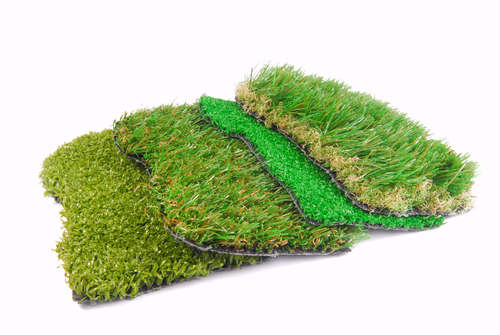7 Tips for Choosing Quality Artificial Grass
July 20
How do you choose artificial grass of good quality when, to the untrained eye, it all looks the same? And that’s not even taking into account the base for artificial turf, nor the length of artificial grass blades…
However, you still need to purchase quality turf, so as to prevent your artificial grass from becoming flat too soon.So, before you call on the services of a company that provides artificial turf installation services in the San Diego, CA area, take a look at this list of top artificial grass-choosing tips.

How do I choose artificial grass?
When you decide to treat yourself to some new, shiny, artificial turf, you obviously want the best possible artificial grass for your money. Most of the time, it’s all too easy to get seduced by the good looks, and neglect inspecting other aspects of quality artificial grass. However, that is a mistake, as looks can definitely be deceiving. Yes, your artificial grass should look good, no doubt, and it is one of the signs that it’s good, but not the only one. Let’s take a look at important steps of selecting the best artificial turf for you.- Use – When it comes to the ways people use their artificial grass, there are four basic ones:
- Outdoor living spaces
- Front and back yards
- Dog play spaces and kennels
- Putting greens
- Traffic – Once you’ve settled on a purpose, consider the amount of traffic your artificial turf is about to get. If you’re expecting kids running about, playing games, and pets doing their stuff, then you should definitely go for a more durable variant of synthetic turf.
- Pile height – Pile height is very important when choosing artificial turf. Yes, it is largely conditioned by the envisioned use for your turf, but it is worth mentioning that anything longer than 37 mm will make your lawn look flat really quickly, due to our dear friend – gravity.
- Density – The denser the grass, the more durable and long lasting it is, and the better it will sustain all the wear and tear you’re probably going to subject it to. That is why it’s generally a good idea to opt for denser artificial turf.
- Weight – Weight stems from density and blade length. While density is not something you should take into account if you plan on installing artificial grass in your backyard, you should definitely consider it if you plan on placing it on your roof or your balcony.
- Warranty – Taking a closer look at what it says in the warranty is an excellent way to tell if the artificial turf you’re thinking of choosing is of good quality. The longer the warranty, the more likely the grass is good.
- Price – Finally, and although it does sound a bit silly, the general rule of thumb has always been this – if you’re struggling to find what’s good, buy what’s expensive. Splurgin a bit is usually a sound decision when it comes to buying artificial turf.
How can you tell good quality artificial grass?
There are several telltale signs that will help you easily separate good-quality artificial grass from poor quality one. Here’s a closer look at how you should approach your artificial turf assessment procedure.
- Texture – Artificial turf that is of good quality will have a softness to its texture. The feel of good artificial grass should not be abrasive, but soft and tender to touch.
- Looks – When it comes to evaluating the quality of artificial grass, the way it looks should be high up on your list. If artificial turf doesn’t look as close to the real thing as possible, chances are its quality is poor.
- Construction – Artificial grass needs to feature latex backing with holes in it, so as to allow for adequate drainage. Also, if possible, look for a padded underlay, as it will provide additional stability and comfort.
- Stripes – If you notice stripes on the samples of artificial grass you’re considering purchasing, maybe you should look at another one.
- Fibres – One of the clearest indications that artificial turf is not good is that its fibres are too thin and too narrow. This compromises the look, the feel, and the longevity.
- Yarn loss – Excessive yarn loss is a bad sign when choosing synthetic turf. Some loss is OK, but too much is, well, too much. You can test this by pulling the fibres at the center of the sample.
- Density – Finally, every quality artificial grass should be dense. If the blades are too sparse, you’re not looking at a quality product.
